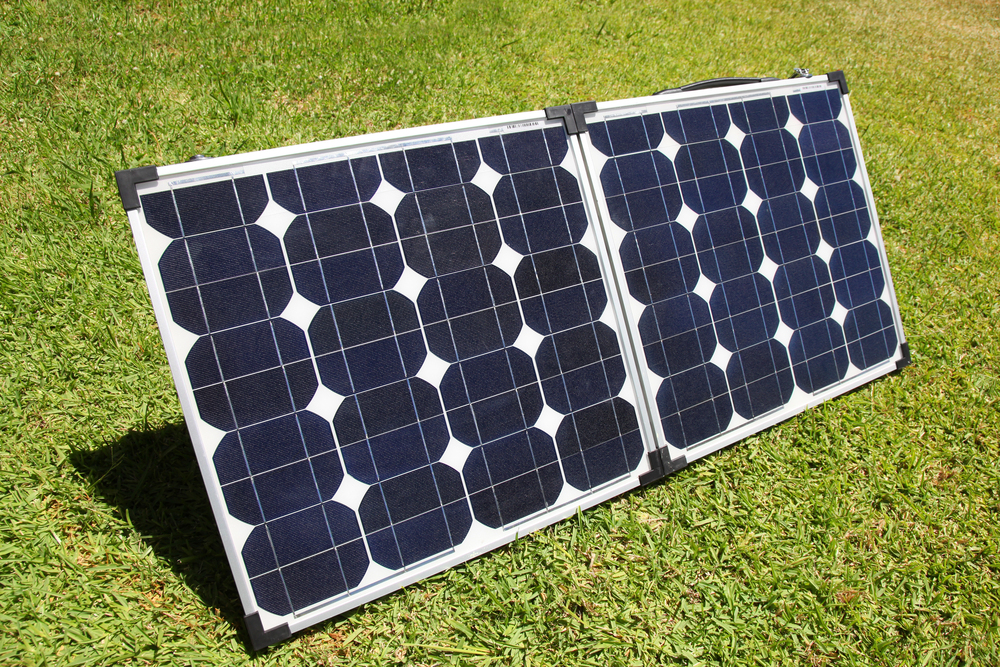Most of you reading this probably live in a place where you can take access to clean water for granted. We turn on the tap and there it is – all we want. All we need. Water for cooking, water for drinking, water for bathing, water for laundry. However, in a long-term grid down situation, we won’t have electricity, which means we won’t have running water.
When you’re doing research on how to get started prepping, there’s a lot of talk about storing up enough food, but the necessity to have an ongoing water source is often overlooked. Human beings can survive weeks without food, but they can only survive about three days without water. Long term survival depends on figuring out how to get water when SHTF.
Disclosure: There are affiliate links in this article and I may get commission if you purchase through these links. It will not cost you anything additional, and helps support this site!
How Much Water Do People Use Every Day?
The amount that people use is going to vary widely, of course, but the Environmental Protection Agency estimates that the average person uses 82 gallons of water a day. An 8 minute shower uses approximately 17 gallons of water. Low-flow toilets use 1.28 gallons per flush. Washing a load of laundry takes 14 gallons. Taking a bath uses 25 to 50 gallons of water. Your dog is supposed to get 1 fluid ounce of water for every pound of body weight. A 10 pound dog needs about a cup of water per day. A 70 pound dog needs 7 cups.
How Much Water Do You Need To Survive?
The National Academy of Medicine recommends drinking about 13 cups of water a day for men, and 9 cups of water a day for women. There are other sources who recommend drinking a gallon of water a day, which is 16 cups. If it’s hot, or if you’re doing a lot of physical labor (which is likely in a long-term grid-down scenario because you’d be gardening for survival, hunting, chopping wood, etc.) then you’ll need even more.
That gallon a day is bare minimum survival. That is just the amount of water that you need to drink – it’s not taking into account water for cooking, for instance, and if you are storing dehydrated foods long term, then you will need to re-hydrate them before you can eat them.
You also need water for laundry, even if you do laundry a lot less often after the apocalypse. If you have pets or livestock, you’ll also need water for them. You need water for brushing your teeth, you need water for bathing, which, again, will probably happen less often in SHTF situations.
So where and how can you get water in a grid down situation?
Short-Term Emergencies
A short term emergency could be a power outage from a hurricane, tornado, flood, earthquake, or some other scenario, where you don’t have any running water in your house for a few days to a few weeks.
This is, of course, much easier to prepare for than a permanent grid-down scenario. And it should be your starting point for prepping. The government recommends that everyone have at least three days worth of food and water. Puh-lease. Everyone should have at least a few weeks worth of food and water, at a minimum, for both themselves and their pets. Rotate the food regularly so that it doesn’t expire.

1.) Wells: If you have an old-fashioned well with a bucket, then you’re golden; you have one of the most reliable water sources, and you just need to have the ability to purify water. However if you’re like the majority of people today and have a well that requires electricity and you lose power, you will not be able to get water from your well unless you’ve got a backup solution. Here are a few:
- A generator, powerful enough to power your well’s pump motor. Most deep wells use a 220v pump motor, and most portable generators only are 110v, so before you count on a generator to run your well, make sure that you know the voltage of both your well’s pump motor and your generator. Also, generators run on fuel. Gas, diesel, propane or natural gas are the most common options. Get your generator serviced regularly, and make sure you have enough fuel on hand to last for several weeks. This will suffice for a short-term emergency situation. For a long-term grid down scenario, you’ll run out of fuel eventually. A solar-powered 220v generator would work, but it’s also weather dependent, so if there were weeks of cloudy weather, you’d be out of luck.
- A hand-pump attached to your well. Make sure that you get the right type of hand-pump, because not all hand-pumps can pull water from a deep well. Best to get it professionally installed. Some hand-pumps require a lot of physical strength to operate. Do your research for every brand that you are considering.
- Lehman’s sells a galvanized well bucket. This isn’t even an affiliate link, I just think that Lehman’s is awesome!
- Depending on your type of well, you may be able to take off the well cover and lower a bucket with a rope.
2.) Water storage https://amzn.to/4bzxsWI Whether you have a well or are in a more urban area and use city/town water services, having some water storage like this in the house means that you won’t have to panic if the power goes out. (That is an affiliate link, but it’s also what I use.)
Buying bottled water and gallons of water at the store is all well and good, but they don’t stack up on each other, which means they take up a lot of space, and they aren’t meant to last for a long time. Eventually they’ll start leaking. You’re better off with containers that 1.) are stackable and 2.) are designed for long-term storage.
3.) Bathtub water storage. https://amzn.to/3R0nGVv If you have advance warning that very bad weather is coming, you can put this in your tub and fill it up with up to 100 gallons of fresh water.
4.) Whatever clean vessels you have on hand. If you know that bad weather is coming and you don’t have any long-term water containers, then just fill up your bathtubs, sinks, and any glasses, jars, pots and pans, and bowls that you have in your house, before the power goes out. Make sure that any drinking water goes into clean containers, and cover them to keep out bugs and dust. You do not want to drink dirty water, especially if you don’t have the option to boil water. You can put a tarp over your bathtub.
You never know how long it’s going to take for utility companies to restore power. If you’ve filled up all the vessels in your house, and you get your power back right away – worst case scenario, you have a bunch of extra water that you can use to water your plants, or pour down the drain. If you lose power for an extended length of time, you have enough water to tide you over for at least a few days, maybe longer.
5.) Rain barrels These are good for both short term and long term SHTF scenarios. The CDC does not recommend drinking water from rain barrels, but you can use it to water your garden, washing your clothes, and if you are short on water, you can boil the water over a camp stove and your dogs can drink it. It’s not ideal, but neither is watching your pets suffer from dehydration if your water stores are running low and you have to decide whether to use water for your family or your pets.
Long-term Power Outage/Grid-Down
If you’re in a TEOTWAWKI scenario – prepper slang for the end of the world as we know it – then having a reliable source of clean water takes on an entirely new urgency. Power’s not coming back on, and even if you have been really stocking up on your emergency supplies and you have a few hundred gallons of water stored in clean water containers ( which is more than most people do!) that’s still only about a months’ worth of water for a family, if you use the water very, very sparingly.
That doesn’t take into account the water that you’ll need for livestock, for washing clothes, cooking with, pets, or watering your crops. And to survive long term, you will need livestock and crops (or fantastic skills that you can trade, and access to someone with livestock and crops that you can trade with.)
Having rain barrels, and plastic bottles of water, and hundreds of gallons of water in 100 gallon water barrels or other storage containers, is an excellent start.
However, realistically, if you want to bug-in for the rest of the apocolypse/rest of your life- stay in your house rather than heading for the hills – you will need a well, and/or access to a stream with running water, or a large body of water. Basically, if you believe that there is going to be a long-term or permanent collapse of society, for whatever reason, and you don’t currently live on a property like that, now is the time to consider moving.

We’ve already discussed wells. If you have one, in order to get water when SHTF, you can’t rely on a fuel-powered generator, so you need to think about the alternative suggestions I’ve already discussed, so that you can access that water.
If you can afford it, and you have a source of water on your property, getting an old fashioned hand pump installed would be a life-saver in an SHTF scenario.

Water Purification After SHTF
You can’t trust that the stream, lake, or even the well on your property will provide potable water, because after societal collapse, you won’t have the ability to have your water tested.
Running water is, of course, safer than standing water, but it’s still not a guarantee.
Water from lakes and streams can be contaminated by numerous pathogens, including giardia, salmonella, and e. coli, which can make you miserably sick or even kill you. And in a grid-down scenario, you likely won’t have access to life-saving medicine, making it especially urgent that you purify your supply of water.
1.) Boil Water. If you are collecting water from a lake or stream or even your well, and you plan to use it for drinking or brushing teeth, you’ll want to filter the water (if you don’t have filters, you can use a clean t-shirt or sheet or other cloth) to remove dirt and particulate matter, and then bring the water to a rolling boil for at least 60 seconds, or for at least three minutes if you are at higher altitudes. Boiling it for longer than that won’t make the water ‘purer’ and you’ll be wasting the water you gathered, as it evaporates. Then after it cools, ideally you would store it in food grade water containers. You should also disinfect any rain water that you collect, because it can very quickly get contaminated.
2.) Water purification tablets are another option. Make sure to follow directions thoroughly.
3.) A water bottle with filter is another option, especially if you have to bug out.
4.) Water Purification Packets are powdered, registered as a disinfectant by the EPA, and another good, lightweight option if you need to bug out.
5.) The Waterdrop filter is a well-respected option and not too pricey.
6.) Filter Water With Sunlight. If you don’t have the option to boil water – filtering water through a shirt, bandana, or other clean cloth, and pouring it into a plastic bottle, and letting the bottle sit in the sun for six to eight hours will kill most pathogens.
Lifestraws are a popular straw that comes with a filter. A note on Lifestraws: You can stick them into a dirty puddle and suck water up through them, which sounds perfect for the apocalypse, but it requires a LOT of sucking power. If you have children, they might not be able to do it, or they might get tired and not drink enough water, which leads to dehydration.
Getting Water In The Woods
1.) If it’s warm out, you can get water from a plastic bag and a non-toxic tree, like a maple tree. It just takes a while. You need a large plastic bag, like an oven bag, and some rope or string or a zip tie. If you use too small a bag, you will only get small amounts of water. You need to find a branch that is exposed to sunlight, with a lot of leaves, and stuff the leaves into the bag, and tie it tightly shut.
All plants carry moisture from their roots to the leaves, and the pores release water into the air in a process called transpiration. It will take about 24 hours to get half a cup to a cup of water, and again, it needs to be warm out. So if you need more water than that, you’re going to need several bags. When the 24 hours are up, you remove the bag from the tree and disinfect the water. If you have no other means of disinfecting it, then straining it through a t-shirt and putting it in a plastic bottle and exposing it to sunlight for at least 8 hours will kill most bacteria and pathogens. Again, this is ONLY IF YOU’RE DESPERATE!
2.) Dig for ground-water. Look for an area with lush vegetation, and dig. You may have to go down several feet to get enough water. It goes without saying that this water will need to be strained, and boiled.
3.) Animal tracks will often lead you to water sources.
4.) Climb the highest tree available to you, to look for water sources.
5.) If there is heavy dew where you are, tie absorbent cloth around your ankles and walk through the dew. You can wring the cloth out and drink the liquid.
6.) A rain poncho or a lightweight tarp can be used to collect rainwter.
7.) Water runs downhill. Walking downhill is a good strategy to find water.
8.) Learn wildcraft by taking local classes so you know what plants you can safely eat to get liquid from. I’m sorry, I know that’s not very specific, but every area has its own unique plants and ecosystem, so the advice that I give based on where I live may not be helpful. If you are in the woods, without water, there are plants that you can eat/chew on that will give you enough liquid to stay alive, but there are also plants that will kill you. Examples of plants/trees you can access: in the spring, birch trees and maple trees have sap in the spring. When it comes out of the tree, it’s a clear, drinkable liquid, not a syrup.
Where To Find Water In A Grid-Down Urban Environment
If you live in a town or city, you still should have water stored in your house or apartment to buy you some time, but without power, sooner or later it’s going to run out.
Options to get water if your power has gone out and you live in the city:
1.) The Toilet Tank. If you have no other options, the water in the toilet tank – NOT the toilet bowl! – can be sterilized.
2.) Hot Water Tank. If you have access to your hot water tank, and there is no power, you can get water from the hot water tank. Every system is different, and ideally you would have a plumber show you how to do this.
3.) Swimming Pool. Do you have a swimming pool? This water is, of course, not meant for human consumption. The CDC says that you can use swimming water for personal hygiene in an emergency, but not for drinking.
Boiling water will remove some of the water. So will sunlight.
You will have to make your own decision about what to do if it is an emergency situation and you literally have no other access to drinking water.
If you have some drinking water but you’re trying to stretch your supplies further, then swimming pool water can be used to wash your clothes and to clean yourself with, and even to flush your toilet.
If you have used up all the water in your house, and have to venture out to scavange, you’re better off going with a group of people who are well-armed. Everybody’s going to be desperate at this point. Your options include…
4.) A Silcock Key is very affordable, perfect for your bug-out bag, and could save your life in an urban scenario when SHTF. Commercial and municipal buildings often have external spigots which do not have ordinary spigot handles because if they did, anyone could – and would – come along and turn the handles on and waste enormous amounts of water. This Youtube video shows you where and how to use your Silcock key on municipal or commercial buildings. Now, this does still depend on running water, but many water systems are gravity-fed so if you are moving through a city and searching for water, you can use your Silcock key and keep trying.
5.) Canned foods have liquids in them.
6.) Garden hoses might have some residual water in them.
7.) Hotels or rec centers with swimming pools. We’re talking desperate times here, but again, you can’t last more than a few days without water.
Your best bet to ensure a supply of drinking water in a long-term grid down scenario is to start planning now rather than later – to have plenty of water purification options, and to move to a location where you have access to a regular water supply.






